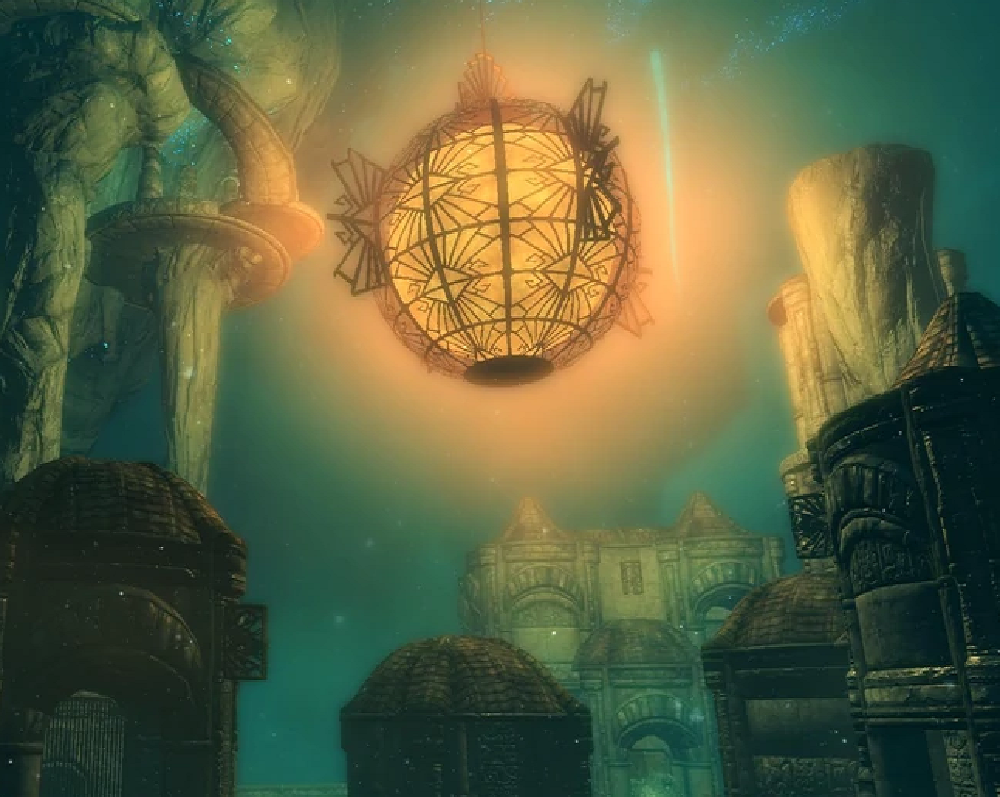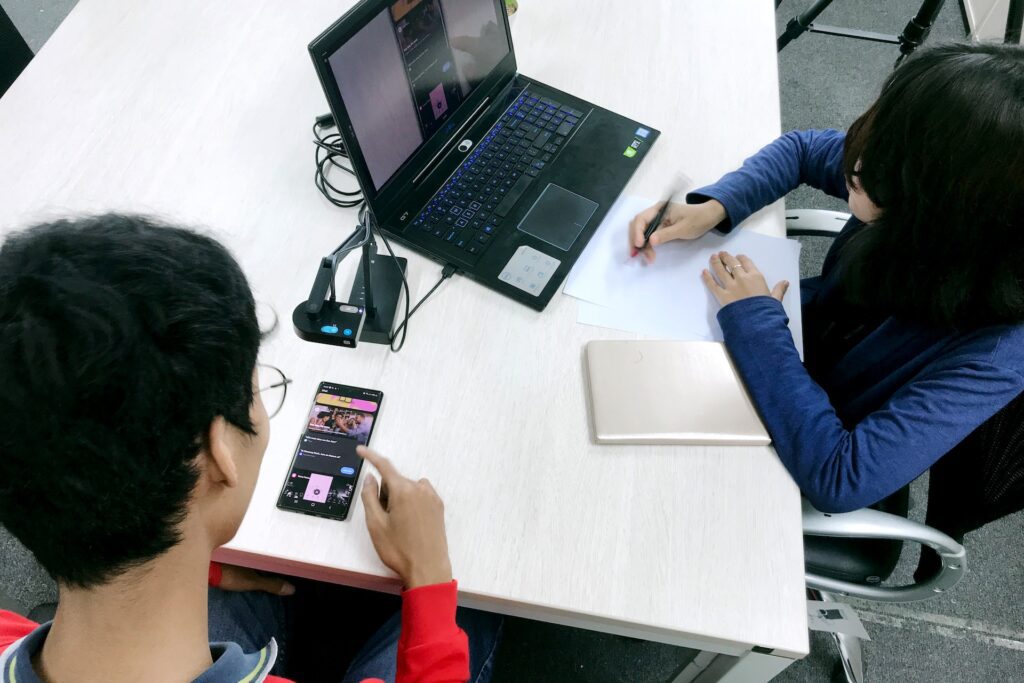The gaming industry currently figures among the fastest-growing ones, and this trend is predicted to continue in the future. A recent report by Statista shows that video games are expected to generate over $220 billion in revenue by the end of this year and the market is projected to grow by around 6.5% a year until 2027.
Sure, we all love spending countless hours playing and experiencing as many games as we can, but this poses one fundamental question: how are they actually developed? This is exactly what you will learn in today’s article. We will take a closer look at all the stages involved in creating a fully-fledged game, explaining them in great detail. Just keep in mind that the exact process may vary from studio to studio, but deviating from these 3 steps is very rare.
Let’s get started!
1. Planning and pre-production: iron out the kinks
To get started with the game development cycle, the first thing you must do is come up with an idea. Even though unique game ideas can be extremely successful, they are much more challenging to get right. For this reason, if you are just starting, stick to one of the many tried-and-true game formulas out there and give it a twist of your own.
You can think of this as the same as getting a recipe from a world-renowned chef and changing an ingredient or two to make it your own. Sure, it will taste differently, but you created something to call yours.

However, it is only after establishing an idea for your game that the fun really starts. Whether you like it or not, games are still products, and you must create a deep and thorough plan to maximize their chances of success. At this stage, you and your team will have to discuss the following points:
- What does market research tell you? Conducting market research is crucial because it allows game designers to understand better the competitive landscape and their target audience’s behavior, helping them make informed decisions about the game’s features and marketing strategy. Furthermore, good market research may also help you identify potential gaps in the market, giving you the opportunity to fill this niche;
- Who is your target demographic? Defining your target audience early on will help designers tailor your game’s features to suit them best. It also helps marketers decide where and how to advertise your game to ensure maximum conversion rates. For example, if your game is geared towards younger gamers, then it’d be wise to advertise your creation on, say, social media and YouTube;
- What’s the budget the team will work with? Knowing from the get-go how much money you will have at your disposal helps you set realistic expectations for your project while allowing you to avoid financial challenges down the line;
- How will you monetize your game? Monetization is how your game will generate revenue, so be extra careful and take everything into account, like your target demographic. For example, if you’re making a game for teenagers and young adults, placing occasional ads and offering players some bonuses for watching additional ones is a good compromise between rewards and user experience;
- For which gaming platforms will you release your project? Choosing the most suitable platform(s) can have a significant impact on your game’s reach and success. If your game is a hyper-casual game, you will most likely want to release it for mobile devices for example. Another thing to keep in mind is that some platforms may require you to comply with their technical specifications and/or content guidelines;
- Worldbuilding: what is your game’s universe like? While not applicable to all projects, worldbuilding is a crucial aspect of modern gaming for many players. You don’t need to create the new Skyrim, but it’s important to keep everything intriguing and consistent, drip-feeding the player with information and letting them discover some on their own;
- Which core mechanics do you intend to implement in your game? They refer to the underlying rules and actions players can take within your game, playing a critical role in determining your game experience.

All in all, there is a lot to discuss even before starting the development of your game. The team might be at its smallest, but they are the ones working on the foundation on which the game will be built. Everything that is defined in this step should be thoroughly written down on the GDD (which stands for Game Design Document).
This document is a living one, meaning it can be updated at any moment, and it contains all the information about your game, including details for top-level executives, technology stack, gameplay elements, creative elements, and much more. It is critical to keep the GDD updated for all team members, as it will serve as the backbone for the rest of the project.
Estimating how long the team will be stuck in pre-production hell is tough. While simpler games can be fully planned within weeks or even days, very complex AAA games, such as Cyberpunk 2077, can take years of careful planning before production commences (and even then it took CD Projekt Red 9 years to fully develop it). However, generally speaking, expect to allocate around 15-20% of the total production time to planning and refining your early designs.
2. Production: getting your hands dirty
After discussing all the main aspects of your game, it’s finally time to work on bringing it to life. Of all stages in the game development cycle, production is the one that takes the longest, consuming a lot of resources. This happens because, in this stage, everything the players see, hear, and interact with (in other words, the game assets) must be created from scratch, such as:
- The video game logic: if you think about it, everything we do with our digital devices is just a bunch of if-then-else statements and memory jumps for programming loops. Video games are no exception, requiring developers to write the code so that the game can be played;
- All visual and sound elements: user interface (UI) icons, 2D sprites, 3D models, detailed environments, immersive ambient sounds, visually striking VFX, dialogues, you name it, but everything is done while in the production stage;
- Game levels and balance: choosing the right level of difficulty for your levels is crucial to ensure maximum fun for your players. There is no right and wrong – some games, such as Sekiro: Shadows Die Twice, have great success despite being punishingly hard, while others, like Slime Rancher 2, offer a relaxing and casual gameplay experience. However, they need to be responsible for guiding the player through the game’s plot and mechanics one step at a time.

Quality Assurance (QA) Testing: ensuring the game works properly
As production is going at full speed, developers release some prototypes for the team to test. You can think of these prototypes as a way for game designers to validate game concepts and mechanics before committing to their development, and they can take up many forms – simpler prototypes can even be paper sketches while more complex ones can range from interactive demos to fully playable builds.
While there are many professionals involved in testing, who all help with gathering valuable feedback for other team members, one gets the spotlight: QA testers, who ensure the game is working as intended with their extreme attention to detail. They are so critical in the game development cycle that some development studios choose to either hire dedicated testers or outsource it completely.
Even among QA professionals, many types of tests are done on a regular basis. Functional tests (ensuring everything works as per the GDD) and compatibility tests (ensuring the game works on many different hardware configurations) are the poster children of QA, but there are many more, like localization testing (which verifies that translations are correct and appropriate), performance testing (which evaluates the game’s performance under normal and extreme scenarios), and regression testing (which ensures unchanged parts of the game are still working in tandem with newer ones).

Pre-launch operations: make your game known
While for tiny games it’s entirely possible to skip this step, it’s extremely important to market and advertise your game to the world. After all, if no one knows about your creation, no one will come to play your game.
This is why you often see many companies putting out carefully crafted trailers, screenshots, lore information, and other promotional materials as the game’s release date creeps closer. Sometimes, they might even reach out to gaming personalities and media outlets to generate some social media buzz, increasing the game’s reach even further.
As marketers work on that, QA testers, game artists, and developers are all trying to polish the game as much as possible, which includes fixing bugs (especially game-altering ones), adding more details to the environment, optimizing the game’s code, and giving it the final balance touches in preparation for its release.
3. Release and post-release: don’t leave your players hanging
After all those months (if not years) of hard work, it’s finally time for the most exciting moment for game developers: releasing your game to the public and hopefully reaping your rewards. However, this is not where the journey ends for most developers, as some games require extra support – which is known as post-release support.
In this case, developers often work on fixing bugs that went unnoticed by QA teams, correcting exploits, and optimizing the game even further for some devices. Can you imagine how much bigger Cyberpunk 2077’s dumpster fire would have been had CD Projekt Red not acted quickly to fix its most glaring bugs, deploying over multiple patches in the weeks following its release?

Recently, working on extra downloadable content (DLC) has been a trend among many development communities – from the biggest AAA companies to the smallest indie developers – and has since become a staple in the industry. And it’s easy to see why: DLCs breathe life into a game, extending its hours of content and keeping it relevant for longer. It also attracts new players to the game and generates revenue for the developers, being a win-win for everyone.
Demystifying the Game Development Process
The game development process is a complex and multifaceted journey, divided into three distinct stages that form the backbone of the video game industry. The first stage of game development is the pre-production stage, where the overall game vision is crafted, and the general concept of the game is outlined. Key game development decisions are made during this phase, setting the foundation for the entire project.
The second stage, known as production, involves the actual creation of the game. It encompasses design and development, where the game world, mechanics, and art are meticulously crafted to bring the game to life. Finally, in the post-production stage, the game undergoes testing and refinement. Game testers rigorously test the game to ensure that it’s free of bugs and that all aspects of the game work seamlessly together. The three stages of game development are crucial for producing a game that hits the mark and becomes a success in the competitive world of video game development.
Skipping the game development cycle entirely with Main Leaf
As you have read in this post, the game development cycle is a long, challenging, and thought-provoking journey. From planning to post-release support, each stage has its own set of unique quirks and challenges that your team must overcome to create a game that players will love.
However, what if we told you there is an easier way to create a fantastic game? It’s known that working alongside qualified professionals is the best way to get things done – and with game development, it’s no different.
We are Main Leaf, a professional game studio in activity since 2010. Throughout our history, we have brought fantastic game ideas to life, and the next one could be yours! Our passionate roster of 70+ talented individuals is ready to work on your upcoming game from scratch, delivering a superb experience at blazing-fast speeds.
If you choose to work with us, make sure to request a game quote right now by clicking here. We will get back to you within 24 hours!

